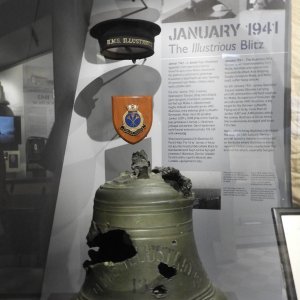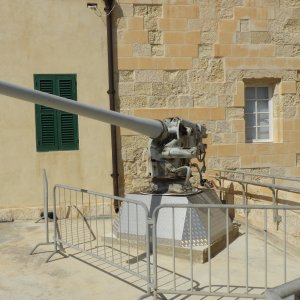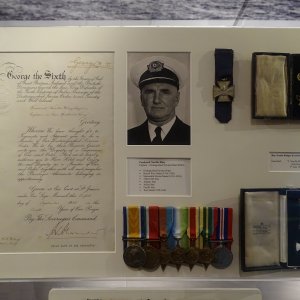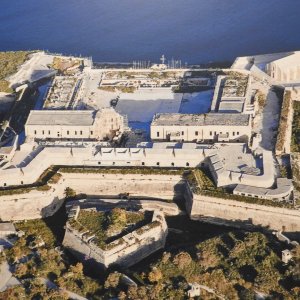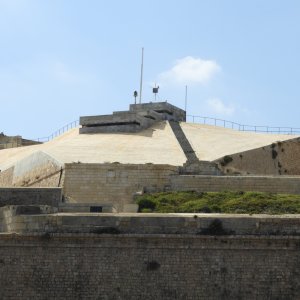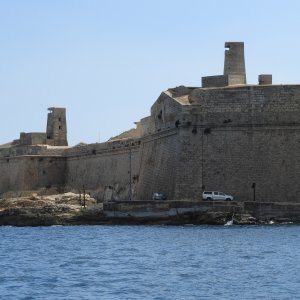Frederick Neville RILEY DSO Captain Merchant Navy
Born 24 March 1896 at Holyhead, Anglesey, Wales to Alfred Thomas and Miriam Riley, Nee Robinson. 1901 residing with his parents and siblings at 37 Shammouth Road, Holyhead. 1911 with his mother at 1 Sunrise Terrace, Goss, Holyhead. He may have passed away in Brisbane Australia.
The following was found on
https://tighar.org/Projects/Earhart/Archives/Forum/Forum_Archives/199904.txt
From Frederick R Galea, 29 April 1999.
The Boronia Art Gallery in Sydney, Australia, have for sale artifacts from the late Captain Frederick Neville Riley DSO (after a house clearance sale after the death of his widow). Riley served with the Blue Star Line between 1911 - 1962. Offered for sale is: Sextant no 7774, Bell frame of broze alloy silver vernier scale, manufactured by Wilson Gillie and Bruce & Sons, London. In 1907. Scratched initials 'N.T.A.' indicate used by Nautical Training Centre (Greenwich). The Sextant has four index mirror shades and three reflectore shades, with horizon telescope, blank site scope, sighting binoculars and a Galilean scope for night sights. In original brass handled fitted box Calibrated on the silver
Captain Riley was part of 'Operation Pedestal' in August 1942. His ship M.V. Brisbane Star. During the journey along the coast of Tunisia, Africa he had to nurse his ship along the African coast alone after being struck by an unhooked torpedo from a torpedo plane He. 111 of 6. /KG.26 wich caused an enormous hole to her bow, made a solo dash from Sfax and also arrived successfully with a sizeable cargo, he was the 4th to arrive 4.15pm Friday 14th August 1942 with the loss of one crew member.
The London Gazette dated 8th September 1942
He awarded the ‘Distinguished Service Order’ The London Gazette 8th September 1942
Citation. For fortitude, seamanship and endurance in taking his ship through to Malta in the face of relentless attacks by day and night from enemy submarines, aircraft and surface forces.
He was part of 'Operation Pedestal' in August 1942. The hardest fought convoy to Malta during World War II. In the summer of 1942, under the utmost secrecy, a convoy comprising fourteen of the fastest merchant ships afloat, departed Scotland bound for the tiny island of Malta, in the eastern Mediterranean. Under orders from Winston Churchill the convoy was to be escorted by the heaviest concentration of naval warships ever assigned to protect merchant shipping. At worst some of the ships must get through, or Malta would fall. Churchill instructed that he be kept informed as to the progress of the convoy at every stage.
On August 10, 1942 the most heavily defended convoy of WWII slipped quietly through the Straits of Gibraltar into the Mediterranean. Carrying food, diesel oil, coal, and vital aviation fuel, 14 merchant ships escorted by 34 naval warships would attempt to get through to the beleaguered island of Malta. During the three days and nights that followed, the convoy - codenamed 'Operation Pedestal’ would endure the most ferocious and heaviest bombardment of any convoy during World War II.
MV Brisbane Star
'Blue Star Line'
4th to arrive 4.15pm Friday 14 August 1942
1 Crew Member Lost
Captain Frederick Neville Riley awarded the
‘Distinguished Service Order’
The London Gazette 8th September 1942
For fortitude, seamanship and endurance in taking his ship through to Malta in the face of relentless attacks by day and night from enemy submarines, aircraft and surface forces.
Operation Pedestal - Merchant Ships - Melbourne Star, Clan Ferguson, Deucalion, Empire Hope, Almeria Lykes, Dorset, Glenorchy, Santa Elisa, Waimarama, Wairangi, Rochester Castle, Ohio, Port Chalmers, Bribane Star. Royal Navy Ships, HMS Eagle, HMS Manchester, HMS Cairo, HMS Foresight, HMS Nigeria.
www.melbournestar.co.uk
The Brisbane Star took a torpedo in the bow, opening it up to the sea and causing flooding. The crippled freighter could only make 8 knots and her master, Captain Frederick Neville Riley, detached the ship from the convoy and headed south toward the Tunisian coast. By dawn on Thursday 13 August only seven of the original fourteen merchant ships were still moving toward Malta, two with serious damage (the Brisbane Star and the vital Ohio). As the Brisbane Star was limping along the Tunisian coast that evening, she was shadowed by a submarine of unknown nationality. The ship was safe in Vichy territorial waters, but then Vichy authorities appeared in a patrol boat and announced that the vessel was to be interned. Captain Riley invited two of the French officers aboard. He opened his liquor cabinet and poured on both the whiskey and the charm and was able to persuade them not to intern his ship and crew. After the Vichy officers left the ship Captain Riley waited until dark and then broke for Grand Harbour. The resourceful Captain Riley and his ship survived the night and with an umbrella of Malta based Spitfires, the Brisbane Star made its final dash for safety. The people again cheered, while staring in admiration at the ship with its torn bow, down by the head, bringing more needed supplies to the beleaguered fortress. The Brisbane Star arrived at noon on Friday 14 August.
Extract from The Maltese Cross, A Strategic History of Malta.







